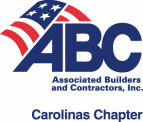The North Carolina Court of Appeals (“COA”) this morning issued a 33-page opinion clarifying the types of professional engineering services entitled to a claim of lien under North Carolina’s mechanics’ lien statutes. One of the three COA judges, however, issued a dissenting opinion, which means further review by the North Carolina Supreme Court could be in the offing. This post explores the facts of Ramey Kemp & Associates, Inc. v. Richmond Hills Residential Partners, LLC et al., discusses the majority and dissenting opinions, and comments on the important points to take away from the decision.
THE FACTS
The agreement giving rise to the lien dispute at issue was a professional design services contract related to traffic engineering services on a Wake County development. The engineer’s professional services began in 2005, but the development stalled when the bottom fell out of the economy in 2009. Indeed, the North Carolina Department of Transportation voided permits authorizing construction of access driveways on January 16, 2009 due to the low level of construction activity on-site.
The last work performed by the engineer on the project was a February 2010 status report of outstanding or unresolved engineering issues, prepared at the project owner’s request to facilitate its marketing of the property to a potential purchaser. The engineer’s work on the status update letter and previous services went unpaid, and it filed a claim of lien on March 30, 2000. The claim of lien alleged that the engineer had last performed on February 24, 2010.
Meanwhile, the lender that had financed the development foreclosed on the property after the owner defaulted on its loan obligations. The bank bought the property at foreclosure sale on February 26, 2010 and transferred it to a third party on June 26, 2010.
When the engineer sued to enforce its lien, the bank and new property owner, named as defendants in the action, argued that the engineer could not treat the February 2010 status update as the date upon which services were last furnished for the purposes of evaluating whether the lien was filed within 120 days of last performance, as required by N.C. Gen. Stat. s. 44A-12(b). The trial court disagreed, effectively ruling that the new owner had taken the property from the bank subject to the engineer’s lien. The bank and new property owner appealed.
COURT OF APPEALS OUTCOME
Relying on an affidavit the engineer had filed with its summary judgment papers in the trial court, the COA agreed with the court below that: (1) the professional services performed by the engineer typically span months or even years on a typical development, sometimes with long gaps between service; (2) the parties to the contract in question intended the engineer’s services to constitute one seamless contract; (3) the work performed by the engineer was not piecemeal and subject to separate contracts, but rather performed under a single contract; and (4) the status report drafted in February 2010 was the type of work the parties would have expected on a development such as the one in question. The COA further found that the defendants had introduced no evidence contradicting these four facts, and that they were sufficient to establish a last date of furnishing of February 24, 2010. The engineer’s March 30, 2010 claim of lien was therefore timely.
Just as importantly to architects and engineers in North Carolina, the COA found that the definition of “Improve” under N.C. Gen. Stat. s. 44A-7 specifically embraces “design or other professional or skilled services furnished by architects, engineers, [or] land surveyors,” and that the engineer’s status update letter fell within the scope of that definition.
Unfortunately for the engineer, however, one of the three COA judges agreed with the defendants that sufficient evidence existed to support their “two contract” theory. The dissenting judge found that the author of the affidavit relied upon by the majority had given deposition testimony post-dating the affidavit that raised questions about his actual knowledge of the 2005 contract in question, “potentially contradicting [his] self-serving definitive statements that there was only one contract[.]” This dissenting vote provides the defendants with the right to request review by the North Carolina Supreme Court, and assuming such a request is made, the outcome of this case may be far from over.
THE KEY TAKEAWAYS
Regardless what may transpire should the Ramey Kemp decision be appealed to the Supreme Court, a few points are worth observing:
- Architects and engineers have broad rights to assert mechanics’ liens in North Carolina. Even services such as providing status updates at the owner’s request may be lienable. Design professionals and their attorneys should take note.
- Whether you’re a design professional or a building contractor, your lien rights depend on whether you perform services on any given project under one contract or under multiple contracts. To take maximum advantage of the “relation back” of liens to your date of first furnishing, it is advisable to provide all project services under a single contract, modified, if necessary, by change orders.
- Construction litigators should never assume that what a witness will say at a deposition will comport with what it averred in a previous affidavit. It is essential to explore all facts averred in and related to an affidavit during the deposition preparation process.
UPDATED October 4, 2013 12:30 p.m.: Earlier today, the North Carolina Supreme Court affirmed the decision of the Court of Appeals. The broad lien rights of design professionals in North Carolina remain intact.







Hi Matt, Another great entry! You wrote a great summary and take-away points. I’m really surprized that there was a dissent at all because it seems so clear. Also, I wanted to let you know, that we have been working our our blogroll on our consturction law blog, and we have added your terrific blog. Check it out: http://cobblawgroup.net/blog/
Thanks, Mark! It would appear the dissent was based on a differing interpretation of the facts as opposed to the law. Judge McGee was troubled by the fact that in her view, the affidavit so heavily relied upon by the majority was arguably contradicted by inconsistent deposition testimony, creating a genuine issue of material fact on the issue of whether the February 2010 services were really furnished pursuant to the original 2005 services agreement. Assuming the N.C. Supreme Court limits its inquiry to that difference of opinion, the “good stuff” in the decision re: the scope of designers’ lien rights in NC shouldn’t be threatened. Fingers crossed.
Pingback: New North Carolina Decision Outlines Design Professional Mechanic's Lien Rights | PAID
Pingback: Is As-Built Drawing Preparation a Lienable Activity? | N.C. Construction Law, Policy & News